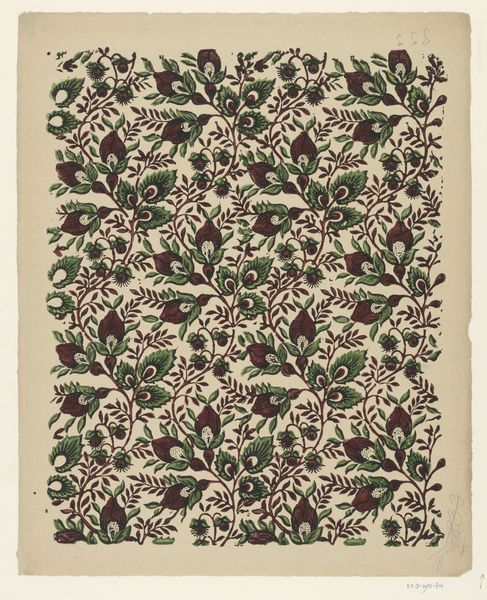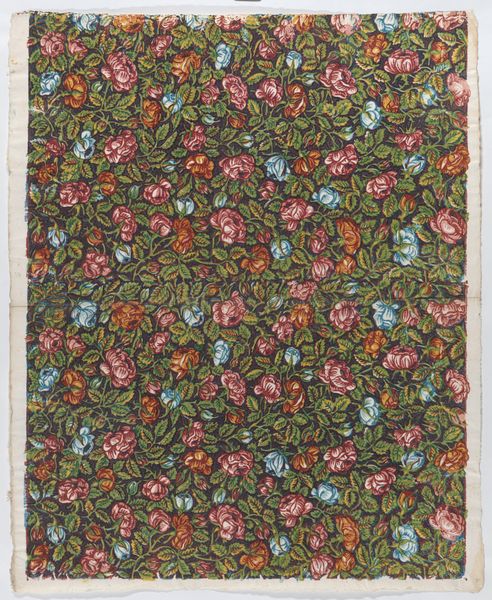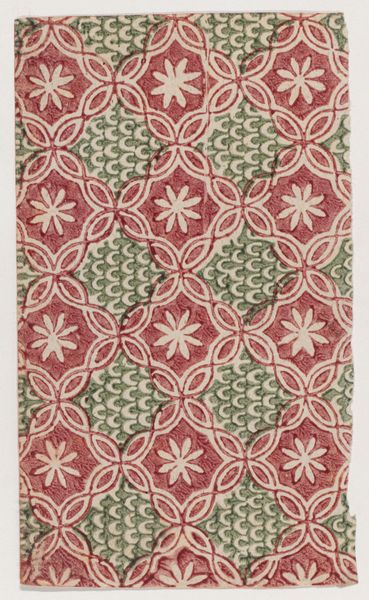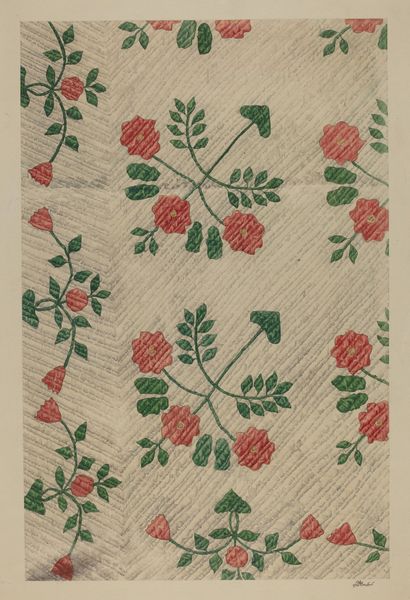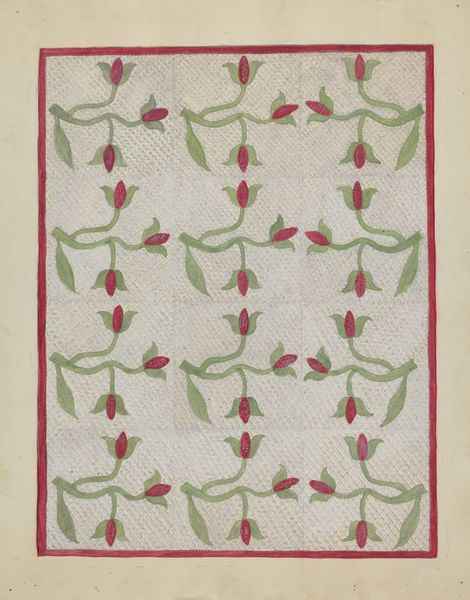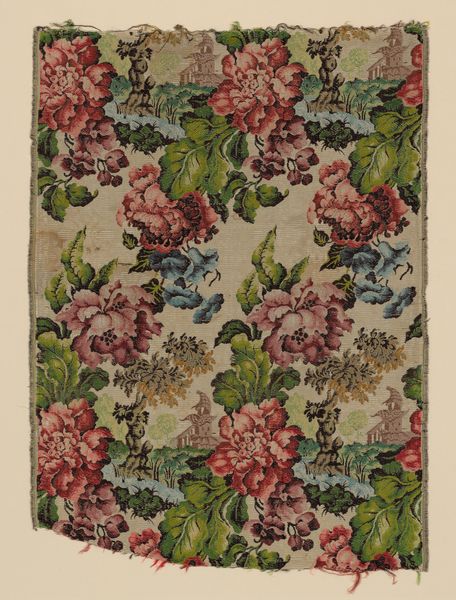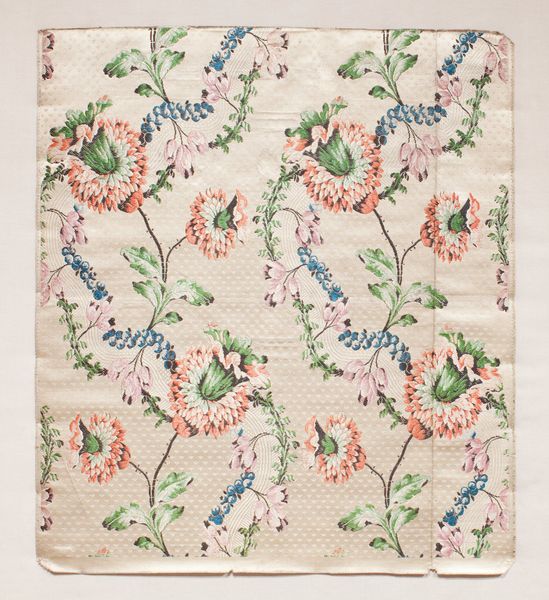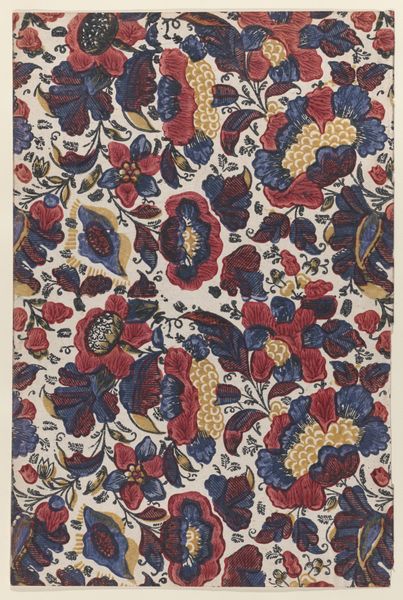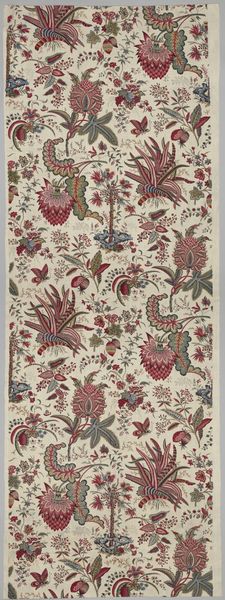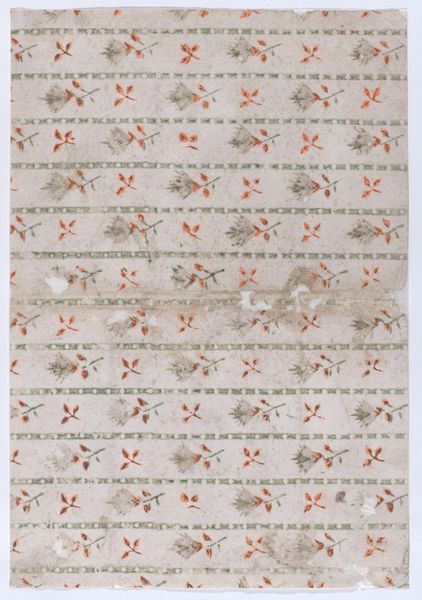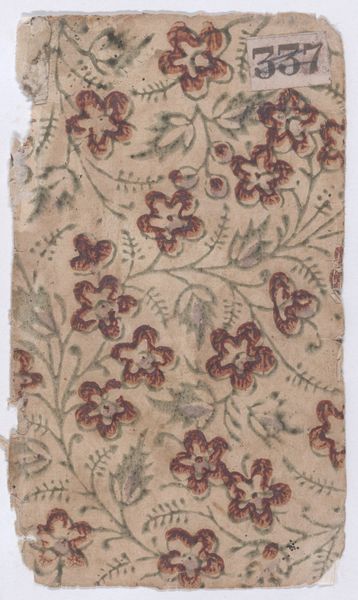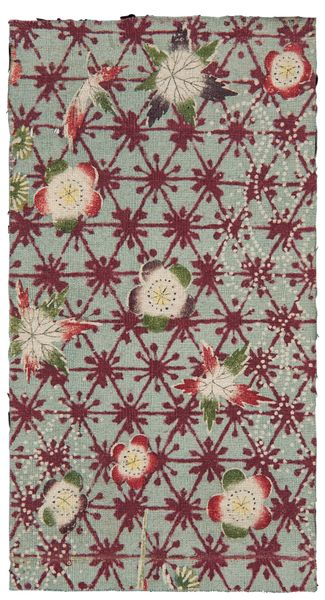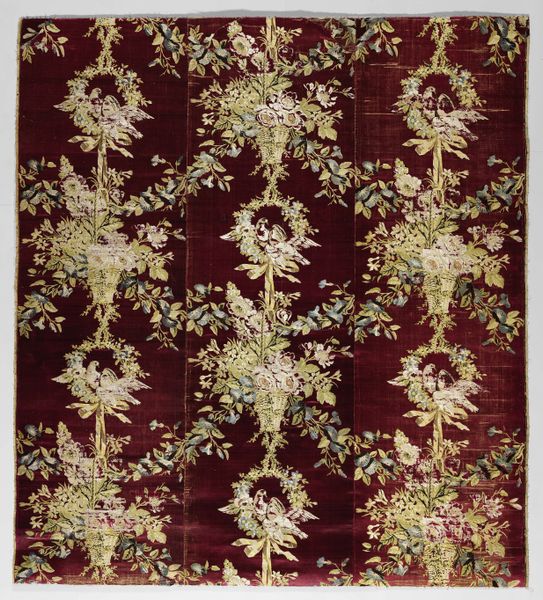
drawing, print, textile
#
drawing
# print
#
pattern
#
textile
#
organic pattern
#
flower pattern
#
decorative-art
Dimensions: Sheet: 18 11/16 × 14 11/16 in. (47.5 × 37.3 cm)
Copyright: Public Domain
Editor: Here we have an anonymous textile, dating roughly between 1775 and 1875, entitled "Sheet with overall floral and vine pattern." The repeated flower pattern feels very dense, almost overwhelming. What do you see in this piece? Curator: Well, I'm immediately drawn to the means of its production. Was this printed by hand, perhaps using woodblocks, or a roller printing machine? The social context is vital: consider the labour involved, the communities and individuals impacted by the textile trade in this era. Editor: That’s interesting! I was thinking more about aesthetics, but you're making me consider the whole system behind it. So, would the value be linked to how efficiently or cheaply it could be made? Curator: Precisely. The tension between mass production and handmade items plays out materially. Cheaper textiles expanded access to a wider consumer base, reshaping social status indicators and home decor trends. Is this textile considered a luxury item or a functional good of everyday life? We must explore these implications to truly understand it. Editor: I never thought about pattern in terms of labour before, but now it makes total sense. Thinking about who made it, and under what conditions... Curator: The materiality and its origin story matters. This patterned fabric tells tales of global exchange and shifts in class distinction linked to who can afford decorative items. Can we ascertain what dyestuffs are utilized? Editor: Okay, so not just a pretty floral pattern, but a clue to broader economic and societal shifts! I'm walking away with a completely different understanding. Curator: Exactly. By analyzing production methods, the artwork unveils hidden societal mechanics linked to class and economy.
Comments
No comments
Be the first to comment and join the conversation on the ultimate creative platform.
